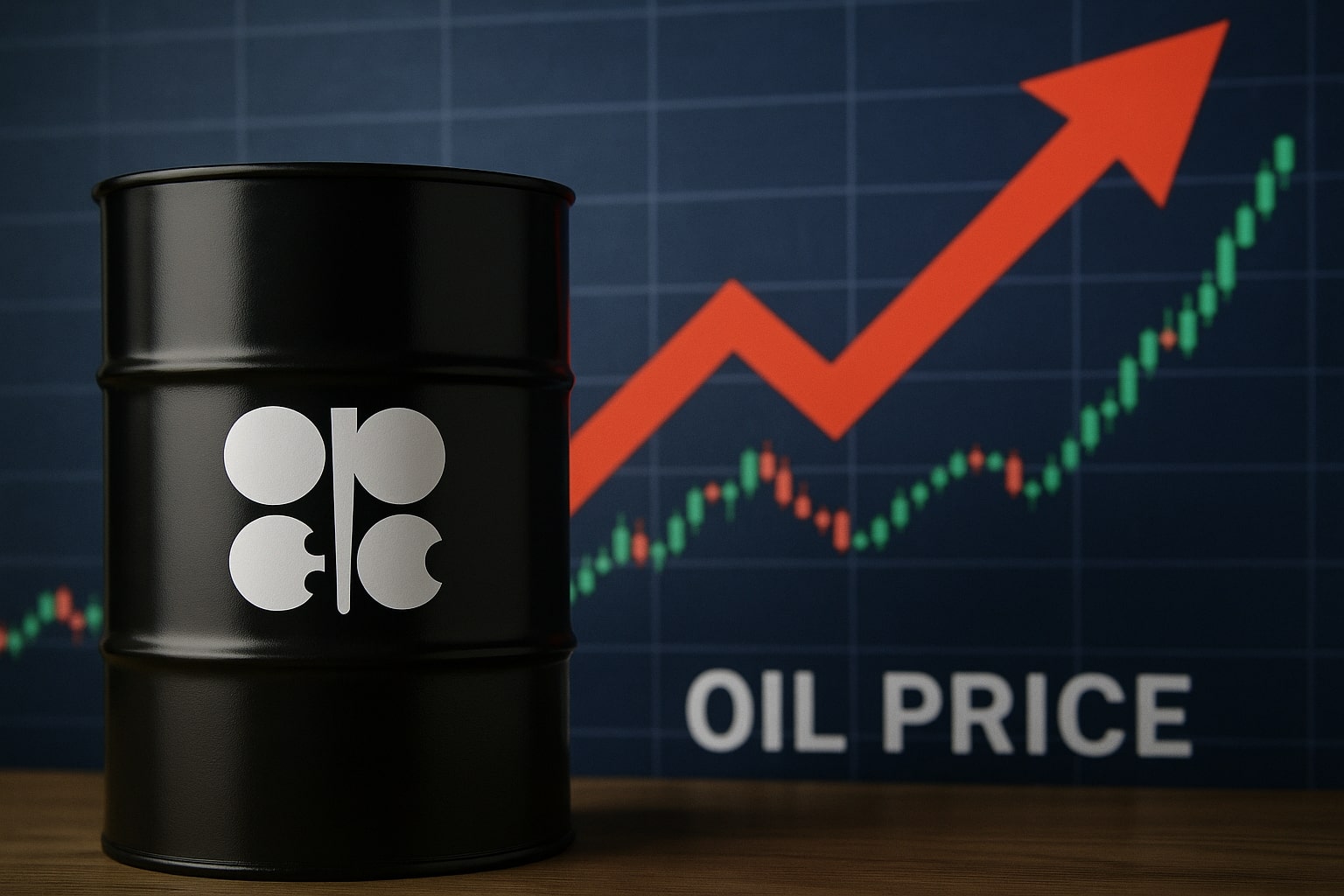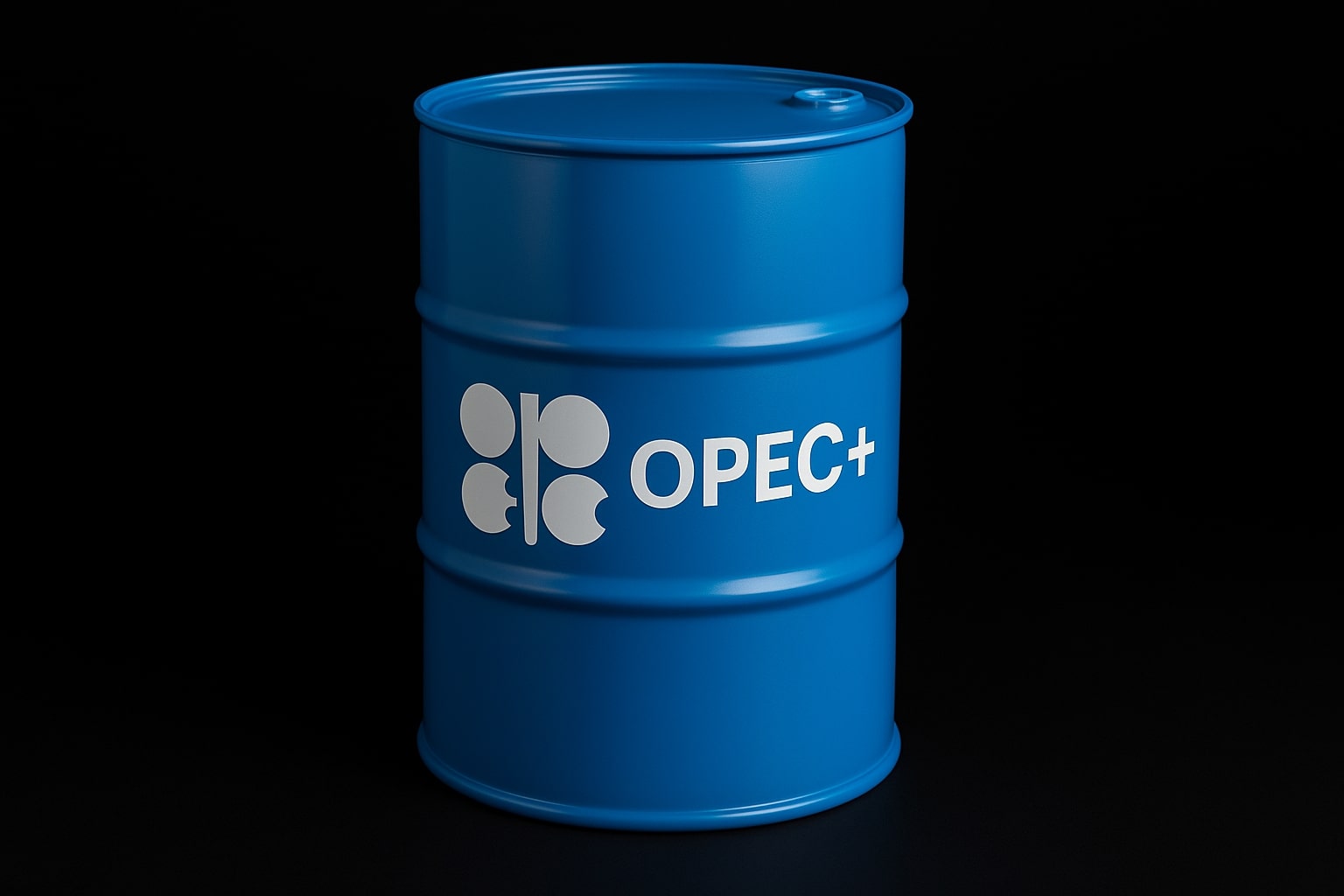Oil Prices in Turmoil: OPEC+ Increases Supply Amid Market Uncertainty
Oil prices experienced significant volatility recently, with both Brent and WTI crude oil markets reacting to unexpected shifts in OPEC+ policies. On one hand, the alliance between OPEC and non-OPEC producers aimed to curb oil production to keep prices elevated. On the other hand, recent announcements by the cartel to increase output by 411,000 barrels per day (bpd) in both May and June have thrown the market into disarray. Despite the surge in prices early this week, as WTI traded at $59.35 per barrel and Brent rebounded to $62.51, market sentiment remains frail, especially with looming global uncertainties. These price movements have led traders and analysts to reassess both supply and demand fundamentals, with a careful eye on geopolitical events, US-China trade talks, and OPEC+'s internal struggles over production quotas.
OPEC+ Strategy: Confusion and Aggression in Response to Price Drops
After OPEC+'s dramatic shift from its original strategy of reducing oil production to stabilize prices, analysts are left grappling with the cartel's intentions. In the wake of the cartel’s surprising decision to increase supply, markets initially recoiled, with crude prices dropping significantly before bouncing back slightly. Brent crude, which dropped to four-year lows, had a sharp recovery and is now trading at around $62.51, while WTI is fluctuating near $59.35 per barrel. OPEC+ is essentially flooding the market with more oil, a move that seems to contradict earlier actions that were intended to restrict supply to prop up prices. The confusion surrounding the cartel’s intentions is compounded by Saudi Arabia’s decision to increase its official selling price to Asian buyers, which contradicts the apparent oversupply.
Many believe that Saudi Arabia's recent decision to hike prices for Asia-bound crude was aimed at regaining market share lost to non-OPEC producers. This price hike came despite declining oil demand forecasts, particularly in Asia, where imports are showing signs of weakness. This decision reflects the internal struggle within OPEC+, where Saudi Arabia is keen on enforcing tighter supply quotas, while other members, such as Kazakhstan, have been increasing output beyond the agreed limits. OPEC+ is facing an uncomfortable reality as their internal disagreements continue to fuel volatility, and the market struggles to absorb these conflicting signals.
US Shale Producers: Impact of Falling Prices on Domestic Production
The latest downturn in crude oil prices has had significant implications for US shale oil production. With WTI now below $60 per barrel, Diamondback Energy (NASDAQ: FANG) has warned that US onshore oil production could start declining later in 2025 due to the economic pressures stemming from low prices. The company has already observed a 20% drop in its frac crew count, and analysts predict a 10% further decrease in the rig count. This decline is partly due to reduced profitability as prices dip below the threshold for many shale producers to continue drilling new wells. As a result, production is expected to wane, creating a difficult environment for US producers amid global price pressures.
Meanwhile, BP (NYSE: BP), one of the majors in the sector, is under pressure due to the drop in oil prices. The company has been forced to cut its capital expenditure guidance by $0.5 billion to $14.5 billion and has signaled that it will need to reevaluate its strategy if prices do not recover. Despite this, BP, along with ExxonMobil (NYSE: XOM) and Chevron, has maintained capital expenditure plans relatively intact, signaling a wait-and-see approach as global trade dynamics evolve, particularly with the ongoing US-China trade negotiations. If oil prices continue to hover below $60 per barrel, these major oil firms may struggle to maintain their current investment and dividend strategies.
OPEC+ and Trade Talks: A Wild Card in Global Oil Markets
In addition to internal tensions, OPEC+ is also navigating the broader geopolitical landscape, with US-China trade negotiations acting as a significant wildcard. The recent announcement of talks between US Treasury Secretary Scott Bessent and US Trade Representative Jamieson Greer with Chinese counterparts has spurred some optimism in the oil market. As trade tensions ease, there are hopes that oil demand could rebound, particularly from China, which is a key consumer. Reports of these meetings sparked a brief uptick in prices, with Brent and WTI both moving higher early in the European session.
However, the broader picture remains uncertain. The US Energy Information Administration (EIA) revised its 2025 Brent price forecast down to $65.85 per barrel, citing an anticipated rise in global inventories. This is a far cry from previous expectations, with the agency initially predicting $67.87 per barrel. The expected increase in inventories, alongside rising production levels from OPEC+ countries, poses a challenge to the market's ability to maintain price stability in the long term.
Geopolitical Tensions and Supply Chains: Another Layer of Uncertainty for Oil Prices
Beyond trade, the geopolitical landscape is another factor contributing to volatility in the oil market. Countries like Iran, which has defied US sanctions, continue to pump oil at relatively stable levels despite the Trump administration's "maximum pressure" strategy. In April, Iran exported 1.6 million bpd of oil, barely changing from March levels, despite increased US sanctions. This continued export activity adds to the supply glut that is keeping oil prices under pressure. The global push to reduce reliance on oil, particularly in Europe and Asia, only adds to the uncertainty.
On the production side, Kazakhstan’s oil company, KazMunayGas, is positioning itself to weather the storm of falling oil prices. Despite a 43% decline in revenues from its National Oil Fund, KazMunayGas remains confident that its long-term strategies, such as increased refining capacity and international partnerships, will buffer the company from the worst of the oil price volatility. Kazakhstan is also moving forward with joint development projects, such as a potential partnership with Russia’s Tatneft to develop the Atyrau refinery, signaling that the country’s oil strategy is evolving to mitigate the impacts of fluctuating prices.
Ongoing Shifts in Market Dynamics and the Outlook for Oil Prices
Looking ahead, OPEC+'s decision to increase output could be a game-changer for the global oil market. As it pushes forward with its strategy to reclaim market share, particularly from non-OPEC producers, it risks adding to the global oversupply. While the decision has caused short-term price dips, the fundamental market dynamics of supply and demand continue to influence market sentiment. In the short term, Brent and WTI may remain volatile, with prices swinging between $60 and $65 per barrel based on the progression of geopolitical events and the success of trade negotiations.
For oil traders and analysts, the key focus will remain on OPEC+'s next moves, the global demand recovery post-pandemic, and the continued influence of US shale production. With WTI now trading just below $60 per barrel, the market is at a crossroads. Will OPEC+ continue to loosen production restrictions, or will geopolitical risks and rising inventories bring about a prolonged downturn in prices? The next few months will likely provide crucial answers to these questions.




















